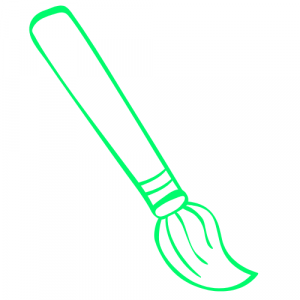Sometimes it can be hard to pick up on the notes and rhythms of a song. In order to see the song in your head, it can help to learn how to read music. This short guide will teach you how to read musical notes and see them in your head!
How To Read Notes
Reading music notation can be a difficult task, but with some practice, it can become easier. Here are some tips to help you read notes:
- Start with the basic notes. The first thing you need to do is identify the major and minor keys. The major key will have one or more sharps or flats in the key signature, while the minor key will have no sharps or flats. Once you know which key is which, all of the other notes in the piece will fall into place.
- Next, look for intervals. Intervals are the distances between two notes in a scale or chord. For example, a major interval is two semitones (or half steps), while a minor interval is one semitone (or one-half step). Remember these intervals by name: major third, perfect fifth, minor third, and so on.
- Finally, read each note individually. When reading music notation, pay close attention to the staff lines and space between each note. This information will tell you where each note should be played on your instrument.
Types Of Notes
There are many types of notes, and each has its own meaning when played on a musical instrument. Notes can be divided into several categories based on pitch, duration, or sound.
Pitch is determined by the length of the sound wave that is produced. The higher the pitch, the further the sound wave travels before it is cut off. There are six different notes in an octave: C, D, E, F, G, A and B. Each note has a specific pitch that must be matched by the instrument being played. For example, a bass guitar must play B to match the pitch of an acoustic guitar’s E note.
Duration is how long the note lasts. Longer durations produce louder sounds. There are five different lengths of notes: short (1/8 second), medium (1 second), long (2 seconds), very long (4 seconds), and infinite (length without end). Instruments that can play multiple notes at once – like drums – use shorter durations to create a more rhythmic sound.
Sound is determined by how high or lows the pitch of a note is compared to other notes in the same category. Notes with higher pitches sound shriller than those with lower pitches.
The Major Scale
The Major Scale is the most basic and important scale in music. It’s made up of the notes C, D, E, F, G, A, and B. The scale can be played on any instrument and is used to create many different melodies and songs.
When learning how to read music, it’s important to understand the basics of the Major Scale. First, focus on learning how to identify each note on the scale and then start building songs based on this scale. Once you have a good understanding of how this scale works, you can start improvising over it or using it in your own compositions.
Minor Scales
Minor scales are the scales that make up the key of C. There are seven minor scales, each with a different tone quality. To play a minor scale, start on the tonic (1st) note and play each note in turn, making sure to follow the pattern shown below:
For example, to play the D minor scale, start on D and play D-E-F-G-A-B-C.
Pentatonic Scales
In this blog post, we will be discussing the pentatonic scales and how to read music. A pentatonic scale is a musical scale that consists of five notes. These five notes can be played together in any order and make up a tonal center.
When reading music, it is important to know which pentatonic scale is being used so that you can play along correctly. There are many different pentatonic scales, but the most common ones used in jazz are the minor Pentatonic Scale and the Major Pentatonic Scale. To identify which pentatonic scale is being used, you will need to look at the root note of the scale. For example, if we were playing a Minor Pentatonic Scale, the root note would be C.
Once you have determined which pentatonic scale is being used, it is important to understand how to read notation in relation to that scale. In order to play along with a piece of music using a given pentatonic scale, you will need to find the corresponding chords. For example, if we were playing a Minor Pentatonic Scale and wanted to play along with an E chord on the guitar, our next step would be to locate E on the fretboard and then use that as our reference point when reading notation.
There are many different ways to read notation and each person has their own preferences; however, one common way of reading notation is by intervals.
The Circle Of Fifths
The Circle of Fifths is a method of harmonic analysis that allows musicians to understand chords and harmonic progressions more easily. It divides the octave into five equal intervals, known as “fifths.” These intervals are called “perfect fifths,” “major thirds,” “minor thirds,” “sevenths,” and “octaves.”
To use the circle of fifths, begin by placing the root note of a chord or harmonic progression in the center of the circle. Then move each chord member up or down the circle by one-fifth until you arrive at your desired chord or harmonic progression. For instance, if you want to play a C Minor chord in the key of A, start by playing A-1, then A-2, B-3, C-4, D-5, and E-6.



